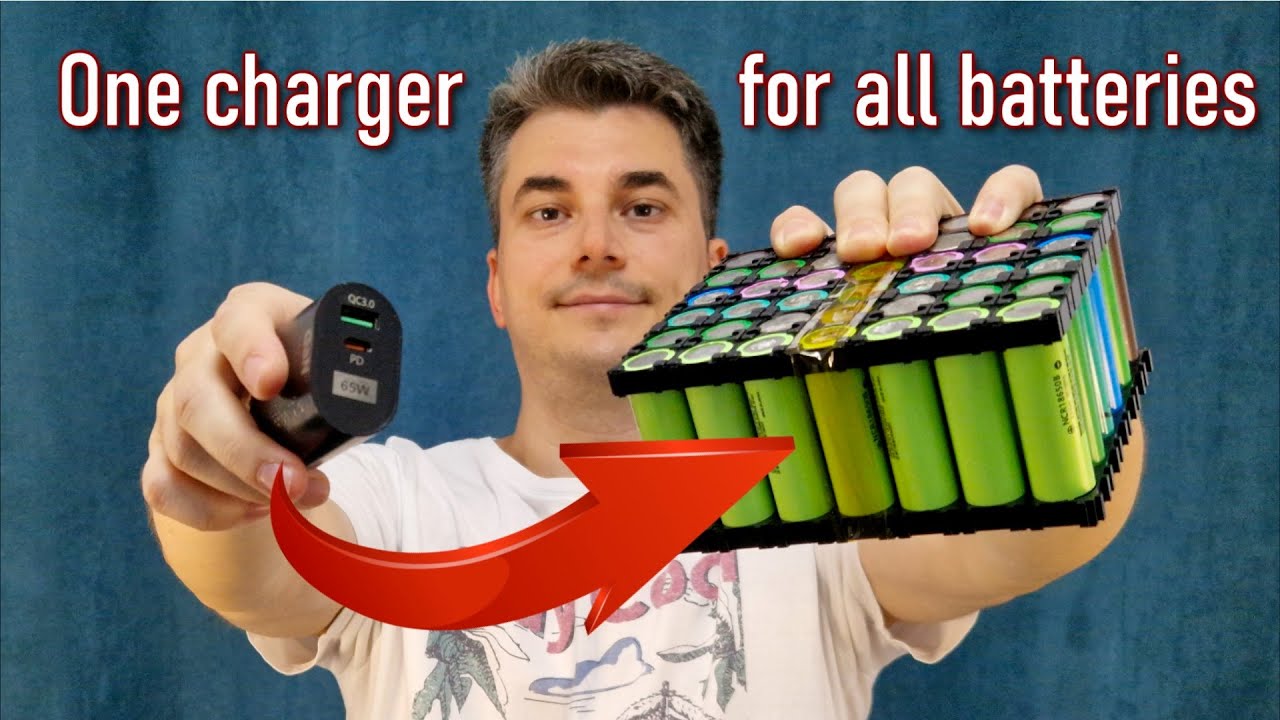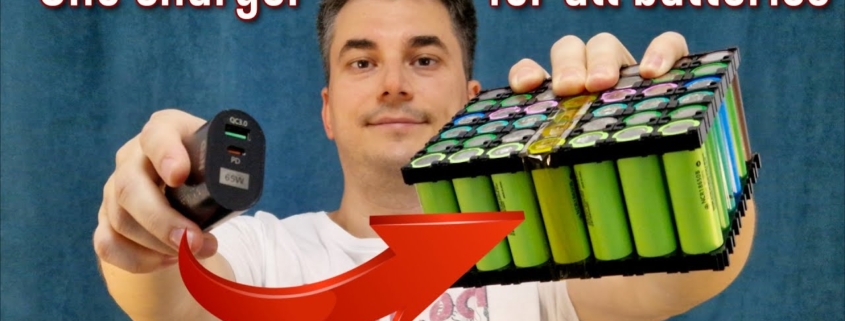How to Charge a Battery Pack? Complete Guide for 2025
So you just got a new battery pack. Or maybe you’ve had one sitting in your drawer for months. Either way, you’re probably wondering: how to charge a battery pack the right way?
Here’s the deal:
Charging a battery pack isn’t rocket science. But there ARE specific steps you need to follow to keep your power bank working like new (and avoid damaging your expensive electronics).
I’ve been using portable chargers for over a decade. And in this guide, as a professional lithium battery pack manufacturer, I’ll show you EXACTLY how to charge any type of battery pack safely and efficiently.
Let’s dive right in.

What You’ll Learn
In this comprehensive guide, you’ll discover:
- The exact step-by-step process to charge your battery pack
- Common charging mistakes that kill batteries (and how to avoid them)
- Pro tips to maximize your power bank’s lifespan
- Safety considerations you can’t ignore
- Troubleshooting tips when things go wrong
But first, let’s cover the basics.
Understanding Your Battery Pack
Before we jump into the charging process, you need to understand what you’re working with.
Most modern battery packs use lithium-ion technology. Why? They’re lightweight, hold tons of power, and don’t have that annoying “memory effect” older batteries had.
Think of your battery pack like a water tank. When you use it to charge your phone, you’re draining water from the tank. Charging the battery pack? You’re refilling that tank.
Simple, right?
Well, there’s a bit more to it.
Types of Charging Ports
Your battery pack probably has one of these charging ports:
Micro USB: The older standard. Still common on budget power banks.
USB-C: The new kid on the block. Charges faster and works in any direction.
Lightning: Rare, but some power banks designed for Apple users have these.
Pro tip: USB-C is becoming the standard in 2025. If you’re buying a new battery pack, go with USB-C. Trust me on this one.
Step-by-Step: How to Charge Your Battery Pack
Now for the meat and potatoes of this guide.
Here’s exactly how to charge your battery pack:
Step 1: Gather Your Equipment
First things first. You’ll need:
- Your battery pack (obviously)
- The correct charging cable
- A compatible wall adapter
Here’s what most people get wrong:
They use ANY cable they find lying around. Bad move. Using the wrong cable can slow down charging or even damage your power bank.
Always use the cable that came with your battery pack. Or at least make sure it matches your power bank’s specs.
Step 2: Connect to Power Source
This is where it gets interesting.
You’ve got three options for charging your battery pack:
- Wall outlet (fastest)
- Computer USB port (slower)
- Car charger (convenient for road trips)
For the fastest charging, plug into a wall outlet every time.
Here’s a quick comparison I put together:
- Wall outlet: 2-4 hours for full charge
- Computer USB: 6-10 hours
- Car charger: 3-5 hours
See the difference? That’s why I always recommend wall charging when possible.
Step 3: Connect the Cables (The Right Way)
This might sound basic, but there’s actually a specific order to follow:
- First, plug the USB adapter into the wall
- Then, connect the cable to the adapter
- Finally, plug the cable into your battery pack
Why this order?
It prevents power surges that could damage your battery pack’s circuits. I learned this the hard way after frying a $80 power bank back in 2019.
Step 4: Monitor the Charging Process
Your battery pack will have indicator lights. Usually, they look like this:
- Blinking lights: Currently charging
- Solid lights: Fully charged
- Red light: Low battery or error
Some fancy power banks have digital displays showing exact percentages. Nice, but not necessary.
The key?
Don’t just plug it in and forget about it.
Step 5: Know When to Stop
Here’s something most guides won’t tell you:
Overcharging is real.
Sure, modern battery packs have protection circuits. But leaving your power bank plugged in for days? That’s asking for trouble.
Once those lights turn solid (or hit 100%), unplug it.
Your battery will thank you.
Advanced Charging Techniques
Want to level up your battery pack game? Here are some pro strategies I’ve picked up over the years.
Fast Charging Your Power Bank
If your battery pack supports fast charging (look for “QC 3.0” or “Power Delivery” on the label), you can cut charging time in half.
But there’s a catch:
You need a fast-charging wall adapter too. Regular chargers won’t cut it.
I tested this with my 20,000mAh power bank:
- Regular charger: 8 hours
- Fast charger: 3.5 hours
That’s a massive difference when you’re in a hurry.
Optimal Charging Practices
Want your battery pack to last for years? Follow these rules:
The 20-80 Rule: Keep your battery between 20% and 80% charged whenever possible. Full discharges and charges stress the battery.
Temperature Matters: Charge at room temperature. Extreme cold or heat damages lithium batteries.
Regular Use: Use and recharge your battery pack at least once a month. Batteries hate sitting idle.
Common Charging Mistakes (And How to Fix Them)
I see people making these mistakes ALL the time.
Mistake #1: Using Cheap Cables
Those $2 gas station cables? They’re battery killers.
Cheap cables often can’t handle the current properly. Result? Slow charging, overheating, or worse.
Invest in quality cables. Your devices will thank you.
Mistake #2: Charging in Direct Sunlight
I get it. You’re at the beach and need to charge your power bank.
But direct sunlight + charging = overheated battery.
Always charge in the shade or indoors. Simple fix, big impact.
Mistake #3: Ignoring Warning Signs
Your battery pack is trying to tell you something when:
- It gets unusually hot
- Charging takes forever
- The case looks swollen
These are red flags. Stop using it immediately.
Safety First: What You NEED to Know
Let’s talk safety. Because a damaged battery pack isn’t just annoying – it’s dangerous.
Temperature Guidelines
Your battery pack has safe operating temperatures:
- Charging: 32°F to 113°F (0°C to 45°C)
- Storage: -4°F to 140°F (-20°C to 60°C)
Outside these ranges? You’re risking battery damage or worse.
Travel Considerations
Flying with a battery pack? Here’s what you need to know:
- Carry-on only (never check battery packs)
- Under 100Wh for most airlines
- Declare large capacity power banks
I’ve had TSA confiscate a power bank because I didn’t know the rules. Don’t make my mistake.
Troubleshooting Common Issues
Even with perfect care, things can go wrong. Here’s how to fix common problems:
Power Bank Won’t Charge
Try these steps in order:
- Check the cable (try a different one)
- Clean the charging port (compressed air works great)
- Try a different power source
- Reset the power bank (if it has a reset button)
Still not working? Time for a new one.
Slow Charging Issues
If your battery pack charges like molasses:
- Check your adapter (needs to match power bank specs)
- Replace old cables (they degrade over time)
- Cool it down (overheating slows charging)
Battery Not Holding Charge
This usually means your battery is wearing out. But before you toss it:
- Fully discharge and recharge 2-3 times
- Check for firmware updates (yes, some power banks have these)
- Contact manufacturer support
Maximizing Battery Pack Lifespan
Want your power bank to last 5+ years? Here’s how:
Storage Best Practices
When not using your battery pack:
- Store at 50% charge
- Keep in cool, dry place
- Check charge level monthly
I’ve got power banks from 2018 still working perfectly using these methods.
Maintenance Tips
Regular maintenance = longer lifespan:
- Clean ports monthly
- Update firmware when available
- Calibrate battery quarterly (full discharge, then full charge)
Small effort, big rewards.
Choosing the Right Charger
Not all chargers are created equal. Here’s what to look for:
Power Output Matters
Match your charger to your battery pack:
- 5W charger: Ancient technology, avoid
- 10-12W charger: Okay for small power banks
- 18W+ charger: Ideal for most situations
Brand Considerations
Stick with reputable brands:
- Anker
- RAVPower
- Aukey
- Belkin
Yes, they cost more. But they’re safer and last longer.
Future of Battery Pack Charging
The charging game is evolving fast. Here’s what’s coming:
Wireless Charging
Some power banks now charge wirelessly. Just place on a charging pad. The future is here.
Solar Integration
Solar-powered battery packs are improving. Not quite ready for prime time, but getting close.
Graphene Batteries
These charge in minutes, not hours. Still experimental, but watch this space.
Заключение
There you have it – everything you need to know about how to charge a battery pack properly.
Remember:
- Use quality cables and chargers
- Monitor the charging process
- Follow the 20-80 rule
- Keep your battery pack cool
- Replace when warning signs appear
Follow these guidelines, and your battery pack will serve you reliably for years.
Got questions about charging your specific battery pack? Drop them in the comments below. I read every single one.
Now go forth and charge with confidence!








